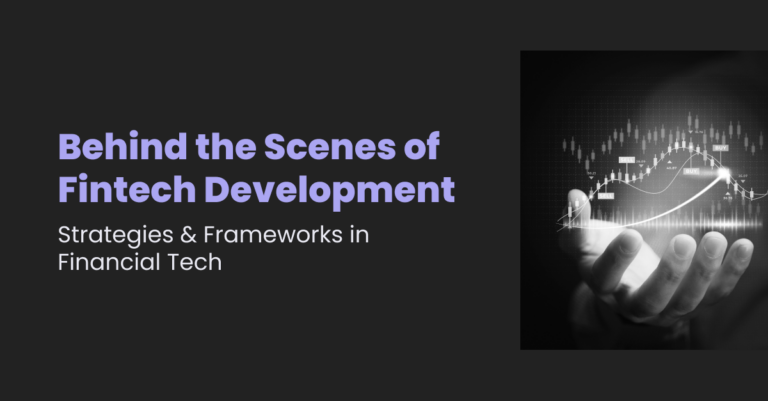Whether you are just starting to promote your website or you’ve been struggling with it for some time now, you might be wondering what is building link everybody’s talking about. Link building is a set of actions that you should be using if you want Google to recognize your website.
- Outreach
- Guest posting
- Internal & external link building
- Crowd marketing
- Press releases
In this guide, you will learn more about those tactics.
There are multiple routes you can take when it comes to choosing a link building strategy. The first one is exploring Google’s algorithm and learning how to crack it yourself. That is extremely time-consuming but, of course, rewarding. Keep in mind, though, that Google’s algorithm changes rapidly, and keeping track of all the updates requires a lot of learning.
The other, much more painless way is hiring a link building service and having professionals do the job for you. A team of pro link builders knows numerous ways of solving typical client’s problems, the main one being their site’s low position in search results.
Understand the Definition of Link Building
If you are still asking yourself what is link building in SEO, let us define it for you. Link building is a complicated process meant to increase a site’s online presence. The way it works is simple in theory: the more reputable sites contain a link to your website, the higher Google “thinks” of you.
If a quality website contains a link to your site, Google assumes that your website is a reputable source, too, and hence, promotes it. The reputation of the sites that link to you plays a big role in this process.
Overall, there is a multitude of link building techniques, some taking more time than others. In this guide, you will learn about the most effective ones.
The Importance of Link Building in SEO
The main reason why you should be focusing on link building is to help people discover your webpage. Without link building tactics, users won’t find your content, and you will not reach your audience.
The way Google decides on the quality of your page is with its PageRank algorithm. Put simply, Google counts the number of sites linking to a page, and this number defines its importance. Therefore, the more links to your website there are, the higher your position in SERP is. This is how the results page is compiled.
So, why link building is important? Because it allows you to attract viewers to your website, either to buy your product or read your content.
Do Not Rely on SEO Links Only
However, building backlinks is not the only strategy you should be using. Link building is, without a doubt, important and highly effective. But there are more components that go into a web page’s success.
The most important means you have for attracting visitors to your site is quality content. No matter how many backlinks you have, nobody will take your content seriously if it’s written with grammar mistakes. Besides, Google won’t rank a poor-quality website highly. Its algorithm is enhanced very quickly, and the requirements for a top-ranked website are beyond a number of backlinks. More on that below.
Distinguish Between White Hat, Grey Hat, & Black Hat Link Building
To determine the strategy you want to use to promote your website, you first need to acquire definition of white hat, grey hat, & black hat link building. Just like in the old movies, colors are used to define between the villain and the good guy. Respectively, white hat link building stands for ethical practices, black is for unethical ones, and grey fits somewhere in between.
Google has a clear set of standards on what is link building SEO, or practices that it expects everyone to follow to promote their sites. If you do, you are using white hat link building. Black hat, on the other hand, is purposefully going against those regulations. It might work quite well for some time, but only until it doesn’t. Defining grey hat SEO is a bit harder. It’s everything that is neither black nor white. It’s practices that are on the edge or undefined.
Consider Google Criteria for Links
Not all links are equally valuable, especially to Google. To define what is a link that holds value, you’ll need to answer a few simple questions. Is this a link to a respectable source? Is this source relevant to my niche? Is it placed in the right context? Read on to find out more!

Link Context
The definition here is rather simple – a SEOlink that is surrounded by relevant text holds more value than the one that is not. Meaning if a standalone link is placed in the footer, it is less valuable than the one that appears in a paragraph of text that is relevant to the content of that link.
That’s why, when writing your promotion plan, you should not neglect the content of your web pages. A page full of links and gibberish will not be ranked highly by Google. Its algorithm will only notice you if your links are relevant and hold value for a reader.
Editorial Placement
Editorial links are perhaps the hardest ones to acquire; yet, they are among the most valuable ones. Editorial links are not paid for. Instead, websites masters link to your content because it’s of high quality. So, how to build backlinks naturally? The answer is simple: you provide good content.
To make other people link to your content naturally, you should create content that is
- fresh;
- engaging;
- controversial;
- interesting;
- original;
- catchy;
- useful;
- relevant.
Organic Anchor Text
Anchor text is the text with a hyperlink under it to create linking in SEO. Most often, when linking to a page, one would use a relevant keyword, an article title, a brand name, or sometimes even a phrase like “click here” or “learn more.”
That text indicates the contents of the page to Google’s algorithm and to the user. It’s called optimized anchor text. However, over-optimized anchor text is something to avoid. If you use the same anchor text over and over, Google will think you’re spamming it, which may lead to penalties from the search engine.
Dofollow vs. Nofollow Link Ratio
When you’re trying to understand how to create backlinks, you need to first learn what dofollow and nofollow links are. Nofollow links are the ones that have a rel=”nofollow” attribute in the HTML code. In other words, those backlinks do not pass any of their authority to the destination link.
An ideal dofollow to nofollow links ratio, unfortunately, doesn’t exist. SEO professionals usually recommend focusing on building dofollow links but not neglecting nofollow ones as well. The latter might influence your ranking positively in some cases. So, you don’t want to miss that additional opportunity. Just monitor your progress consistently and adjust your strategy when necessary.
Develop Your Best Link Building Strategies
To help you determine what is website link building, we have come up with this guide. The thing with SEO is you may think that your strategy is fruitless for months, but then, suddenly, things start rolling, and your site starts getting attention.
You just have to do your research and be patient. It may sometimes take a lot of time for your plan to work. In the following paragraphs, we will explain some of the best strategies and tactics you can use to improve your website’s position.
Manual Link Building
One of the most often used link building strategies is manual link building. It is a broad term that implies you getting the links placed, as opposed to people linking to your website naturally (see editorial placement above). It encompasses many tactics, from local link building to contacting webmasters asking for backlinks.
However, there is an opinion that manual link building is getting old. From Google’s perspective, the links that have been placed for a fee or asked for are not organic, hence, are not considered authoritative.
“Google only loves you when everyone else loves you first.” – Wendy Piersall
To get more of the best linkbuilding tips, just keep on reading!
Setting Up Directories
Put simply, directory link building means having your link added to a directory or an online database. This is the best example of one way link building, where you don’t link back to the site, only have it link to you. The problem with this method is that online directories tend to be spammy and, just like its predecessor, a phone book, obsolete.
However, it is still possible to get organic traffic with these; you just need to know a few rules. If you’re a local business, you should definitely go for it – your link featured in a local directory can boost your site a lot. Besides, a mention on a high-authority website from your niche might even be too much in this case.
Guest Posting & Commenting
If you are sitting here wondering “what is tiered link building?,” then here’s your example. Tiered link building means getting links from a lot of different sources. This is guest posting in a gist.
Guest posting or guest blogging means setting up arrangements with webmasters in your niche to post your content. Ideally, those are reputable sites in your area. And if you leave out the links for a second, it’s a great opportunity to exchange audiences, just like musicians that make collaborative projects all the time. If the website you’re posting on is reputable enough, it can get you pretty high!
One major drawback here, though, is that if your niche is competitive, it can be really hard to get a reputable site to post your content.

Reciprocal Link Building
Now, what is reciprocal link building? In a nutshell, it means exchanging links with another site. This method has been outlined as a violation in Google’s rules, which means it should not be used, right?
Well, in fact, if you link to a reputable site in your niche and have them link to you, it can bring massive benefits to both of you. The main benefit is, of course, the audience exchange. When used in moderation, this tactic can be extremely useful for both parties involved. And if you really don’t want to make Google mad, just make links nofollow.
Analyzing Competitors’ Links
The importance of this step should never be overlooked. If you think about it, it makes total sense – if you have the means to find out your competitor’s tactics, why not do that? Your competitor probably has the exact links Google likes to see. That means you need those or similar links! If your competitor links website about local news, you should probably link to it, too!
“The best place to hide a dead body is the second page of Google search.”
Apart from that, you should also keep an eye on the content your competitors use. Analyze how much content they have on their sides, how and where exactly it is placed, and how many keywords there are. Obviously, you don’t need to do that by hand; you can use tools for analysis. More on that below!
Take Advantage of Internal Link Building
Internal link building is a crucial part of on-page SEO that every website needs to function. When you think of SEO, you first think about backlinks and how you need an authority website to link to yours. But when an aforementioned site contains a link to your page, and then you link your other pages on that one, you can pass some of that authority along. That’s as natural link building can get.
Another important role internal linking can play is to make sure Google understands your site structure. It can discover some pages from SERP or from having crawled them before, or it will find them from following your internal links. Also, if there are many links in website pages pointing to one specific page, Google will take it as a hint that a page is important.
So, to take advantage of internal links, you should do the following:
- create pages to link to;
- use relevant anchors;
- link to relevant pages, the ones a reader would naturally be interested in.
Apart from the SEO benefits, internal links will also help users navigate your website and find the required pages with more ease.

Explore External Linking Opportunities
So, what is link building for SEO, and how long till I see the results? SEO usually means a long-term strategy with lots of steps, i.e., tactics involved. The main drawback is that one may not see the results of their work in a long time.
But what if you need to test an approach other than outsource link building and see the results as quickly as possible? Luckily, there are some quick-win tactics that you can try out. In the paragraph below, we will define more than one of those tactics and teach you how to use them.
Broken link building.
This approach means finding a site in your niche that is pointing to a broken link. Then, you create or provide already existing content on the same topic to the webmaster to replace a broken link with yours. Voila! You built a link to an authority website.

Repositioning links.
If you already have some quality backlinks directing a user to your homepage, but you see that other pages are not getting enough attention, you can try repositioning them. Contact the webmaster, asking them to change the link to a different page. Most often, if the webmaster is willing to cooperate, they will change the link free of charge, thus, helping you bring traffic to the page in question.
Building links from Q&A platforms.
Using forum platforms like Reddit or Quora will help you add value while diversifying your link profile. Engage with users on those sites (make sure to answer their questions; don’t just spam) and build links to your pages at the same time.

Unlinked brand mentions.
That concept is just as simple as it sounds. You basically need to find mentions of your brand online that already exist. Then, contact the webmaster to place a link there. Of course, this is irrelevant if you’re just starting to promote your site. But if you already have a certain online presence, this can significantly improve it.
Trying to Earn Links
Earning links is probably the hardest SEO link strategy. In fact, who said SEO would be easy? On the other hand, it’s very rewarding since naturally earned links are valued higher by Google than any other ones.
According to Google’s Webmaster Guidelines, the best way to gain popularity on the Internet is to create valuable content. That content should ideally engage readers and, naturally, bring you recognition in the form of editorial links. That means a content creator has deemed your content valuable and decided to link to it at their own will, not because you asked them to.
In the paragraph below, you will learn some link building 101 tips on earning links from reputable websites.
Content Marketing
Now, let’s get to link building tips. Content marketing is one of the most widely-used website promotion tactics. The reason for it is very simple – it works really well in off page SEO. Generally, there are three ways of getting backlinks via content marketing. In this section, we will explain them in detail.
- Outreach
Outreach content marketing is a great way to get your content out there. And just like most other SEO tactics, it’s no easy feat. The main goal here is to get your link to appear on a reputable site. Most often, people will either create custom content or insert their link in an existing article. A tip we can give you in this case is to offer value. Show the webmaster that your content will help their readers first.
- Advertise
A pretty obvious way of gaining online recognition is advertising. You can launch an ad campaign promoting your blog on Facebook, Twitter, or a smaller site that has the same audience that you do. It’s easy and quick but expensive. So, when considering this strategy, do take your budget into account since Facebook ads can run at a hefty price. Start small and build your way up. The most reasonable way would be to run ads on a less popular platform.

- Connect
To get a loyal following of readers, you should find ways to connect with them on a more personal level. Find places where your audience is likely to be, like a specific subreddit or a discord server. The hard part here is participating in discussions, actively commenting, and making friends. Otherwise, no one will follow your link.
Linkable Assets
A linkable asset is basically a highly valuable page. It’s the easiest one to start building links to because it’s a page a site visitor would naturally gravitate towards. It’s a perfect example of whitehat link building since using linkable assets means using the leverage that a good piece of content gives you. Below are some examples you can use as a linkable asset:
- calculator or any other tool;
- case studies;
- how-to articles & guides;
- infographics.

The best part about the content listed above is that it’s easily referable. If you make it good enough, meaning, provide high-quality research, write a thorough guide, come up with a unique tool or a new metric, people will naturally want to share it. This is a recipe for success.
Cherry on Top: The Skyscraper Technique
In essence, the skyscraper technique is about doing the same thing any other strategy will tell you – creating great content. Yet, it’s not as easy as it sounds. So, let’s say you’ve done some competitor analysis and found some articles on link building ideas, but you are sure that you can make a better piece of content. So, you do that; you make content that is better than the already existing ones.
Then, you start an outreach emailing campaign. The most important part, according to Brian Dean from Backlinko, is to email people who already have a similar piece of content. That means they will be able to appreciate the value that you bring.
So, here are the steps you need to take to employ the skyscraper technique.
- Find interesting content
- Create a better piece on a similar topic
- Reach out and show it to other people

Using Paid Options
According to many sources, including Google’s Webmaster Guidelines, paying for links is manipulation and an outdated tactic. Nevertheless, it still brings guaranteed results; hence, it is used by many. The reason being it’s much easier than getting editorial site linking. There are multiple ways to get paid backlinks.
- Sponsorships. Another relatively easy way to get links is to sponsor someone. If your site is about sports, a local sports team will do perfectly. If not, find another option; just make sure it’s relevant to your niche. Then, the event or team you sponsored will definitely link back to you.
- Scholarships. Providing scholarships has been somewhat overused in recent years. Still, it’s a sure way to get links from colleges or universities. You create a scholarship fund (it doesn’t have to be big), list the instructions for applicants, and reach out to the said colleges and unis. Keep in mind that both tactics are in the grey hat area.
- Sponsored blog posts. To bring some organic traffic to your site, you can collaborate with an influencer in your niche. You agree on a price, and they publish your link for payment. The best way to do that is to add a rel=”sponsored” attribute to your link so that it doesn’t get the dislikes of Google.

Use Effective Link Building Tools
Now, to the most important part of a link builder’s arsenal – their tools. We’ve compiled the most popular tools and sites nearly everyone in SEO uses. Even if you’re a complete beginner, you must have heard at least something about them. Without further ado, here are the most effective tools for link building.
Ahrefs
This is the biggest and most often used site for every SEO specialist out there. Even established SEO services cannot go a day without it. They use it to perform the following operations.
- Determine the backlink quality
- Do site audit
- Find the right keywords
- Perform competitor analysis
- And many more
What started as a backlink analysis tool is now an all-encompassing platform for almost all of your SEO needs. So, if you’re starting in SEO and thinking about a tool to invest in, Ahrefs should be your go-to. Although it comes at a hefty price of $82 per month minimum, it will be very useful for your SEO needs. Start with a 7-day trial if you’re not sure.
Google Search Console
This is one of the very few free link building tools out there. It’s made to help you improve your site’s performance in the search results. Check the indexing status of your pages, monitor loading speed, & fix issues associated with it, along with server errors and security issues. You can also perform keyword research and view crawl stats. All in all, it’s a great tool you should definitely keep in mind when optimizing your site.
Moz Link Explorer
Moz is a marketing company focusing on SEO. Over the years, they have developed many guides and tools, some of which, including the link explorer, are free. Analyze your backlinks and site’s authority, find your most valuable pages, hence, discovering the weak spots. Do the same with your competitors and use the comparison tools to see which areas you need to improve. Get goals for yourself and measure your efforts’ success.
You can use the Moz tools for free, but they also offer a paid subscription. It includes many additional features such as a Chrome toolbar called MozBar, 24-hour support, automatic pages crawl, keyword ranking reports, etc.
Majestic
Majestic is a link building software that focuses solely on backlinks. With this tool, you can get a very detailed backlink profile review. What’s unique about Majestic is that it categorizes and calculates your backlinks, this way determining your site’s topic.
It doesn’t scan your content as a human would, but instead scans the backlinks, which is the Google way. This is how it determines the site’s authority and a general topic. Majestic’s pricing starts at $49.99 per month for Lite and $99.99 for the Pro plan.
GroupHigh
One of the most widely-used link building tactics is email outreach. But finding people to reach out to can take twice as much time as negotiating. This is when another one of link building tools for SEO comes into play.
GroupHigh helps you find bloggers in any niche with a few clicks. It has the largest bloggers database that you can use to your advantage. Also, it has a very convenient outreach tool, which allows you to email those bloggers without leaving the site. GroupHigh costs $179-$499 per month.
NinjaOutreach
NinjaOutreach is similar to GroupHigh above, but it’s database is even bigger, and it comes with some attractive features. For example, a specialist using the tool can filter results by backlinks, MozRank, page authority, and other metrics. This allows you to find the best representatives of your niche.
This tool also allows you to contact people without leaving the site and even gives you convenient templates for doing so. The lowest price point is $155/month if billed annually or $389/month if billed monthly.
Wrapping Up: Evaluate Your Results
Now that you know what is SEO link building and how to do some of the most popular tricks, we need to talk about one more thing. Success in SEO may look different for you and your friend. You may have different goals and means of getting there. So, if someone uses black hat tactics, their site might grow quickly, but don’t be surprised if it gets banned sometime later. Anyways, some metrics still can tell you for sure if your site is doing well or not.
- Page/domain authority
- Number of referring domains
- Dofollow to nofollow links ratio
- Organic traffic
Those metrics may also differ depending on your goals, but it’s a general assumption. We hope this guide has been helpful and wish you good luck!
















